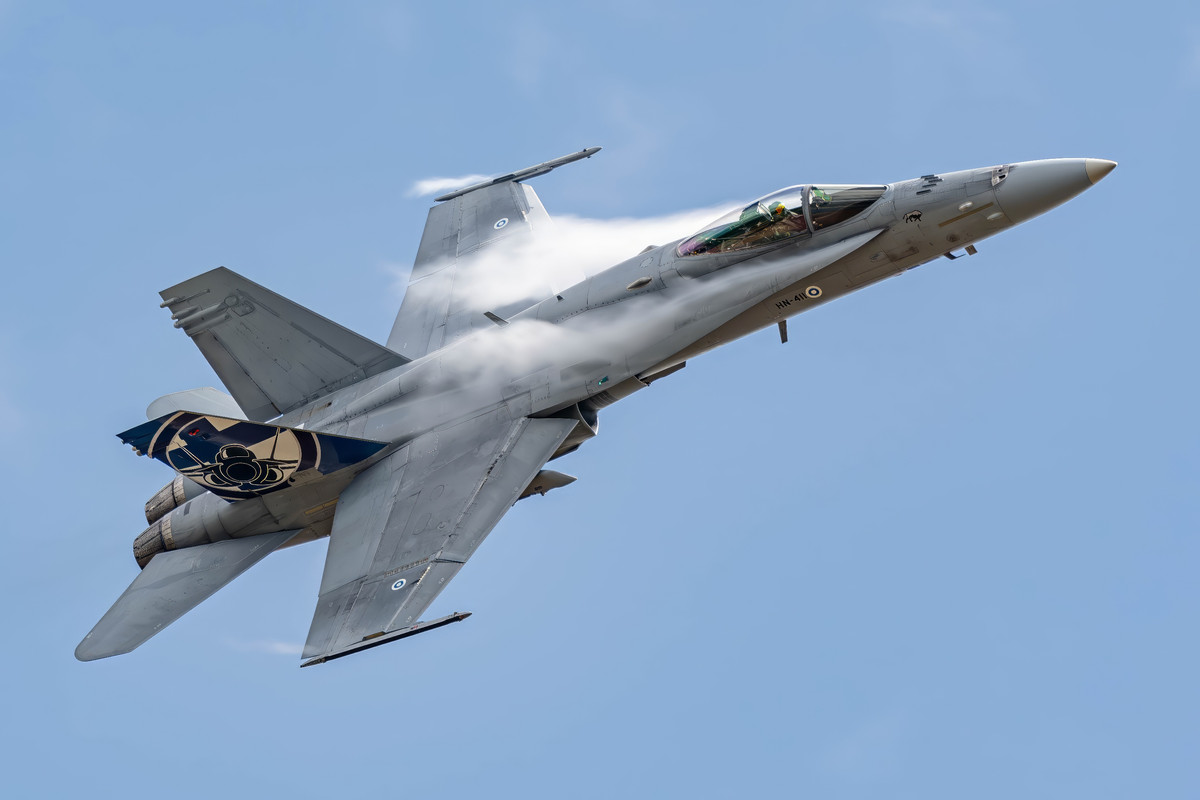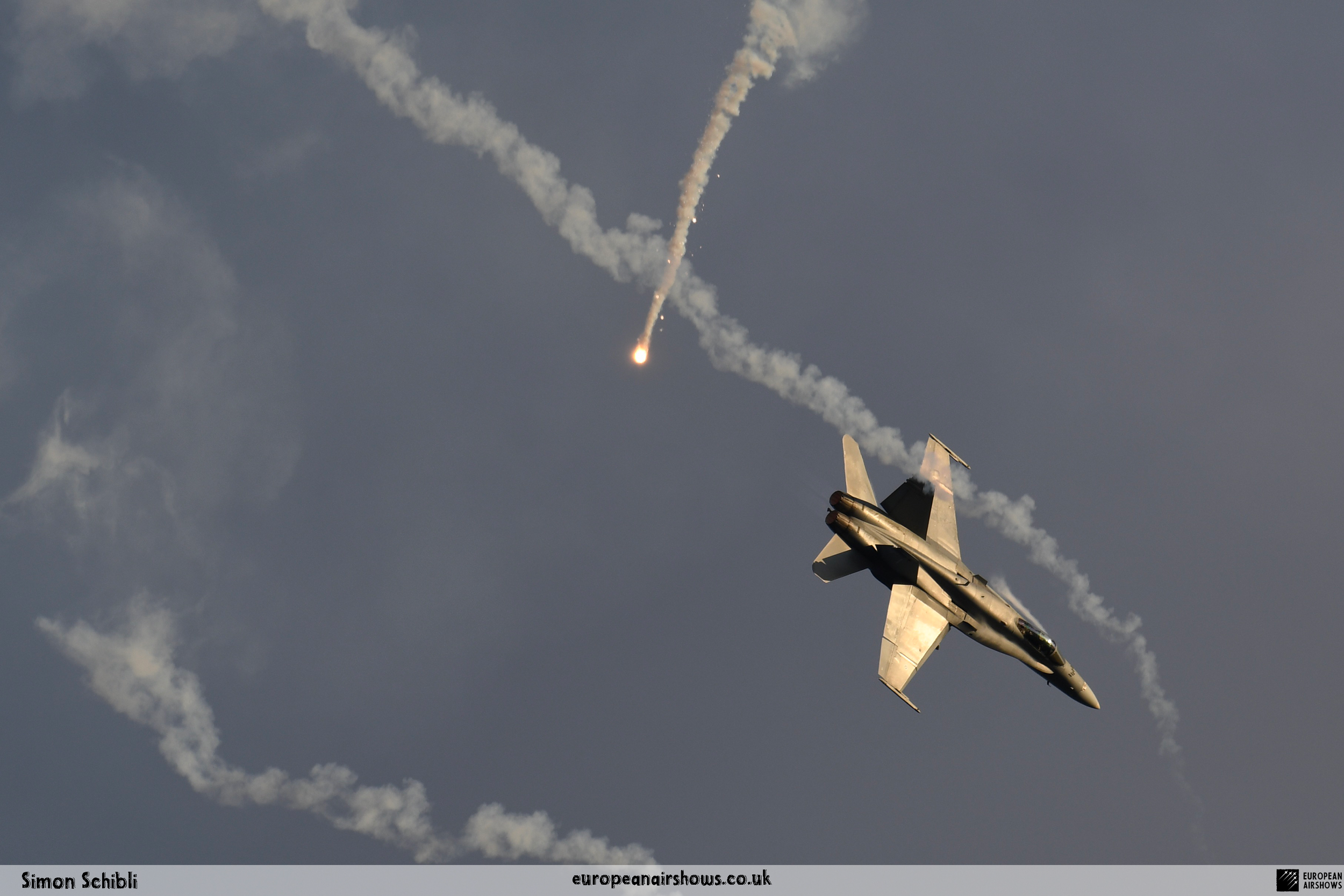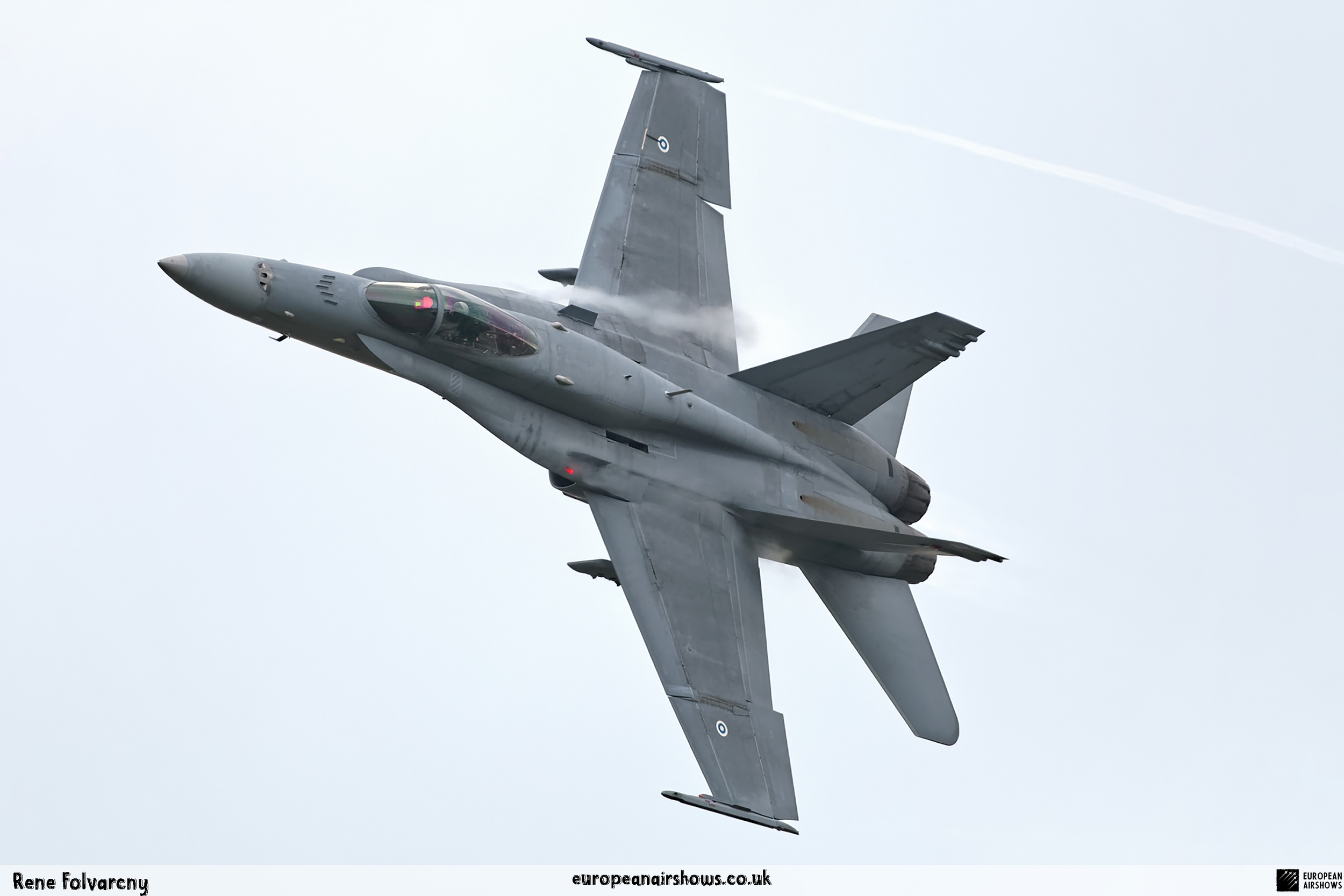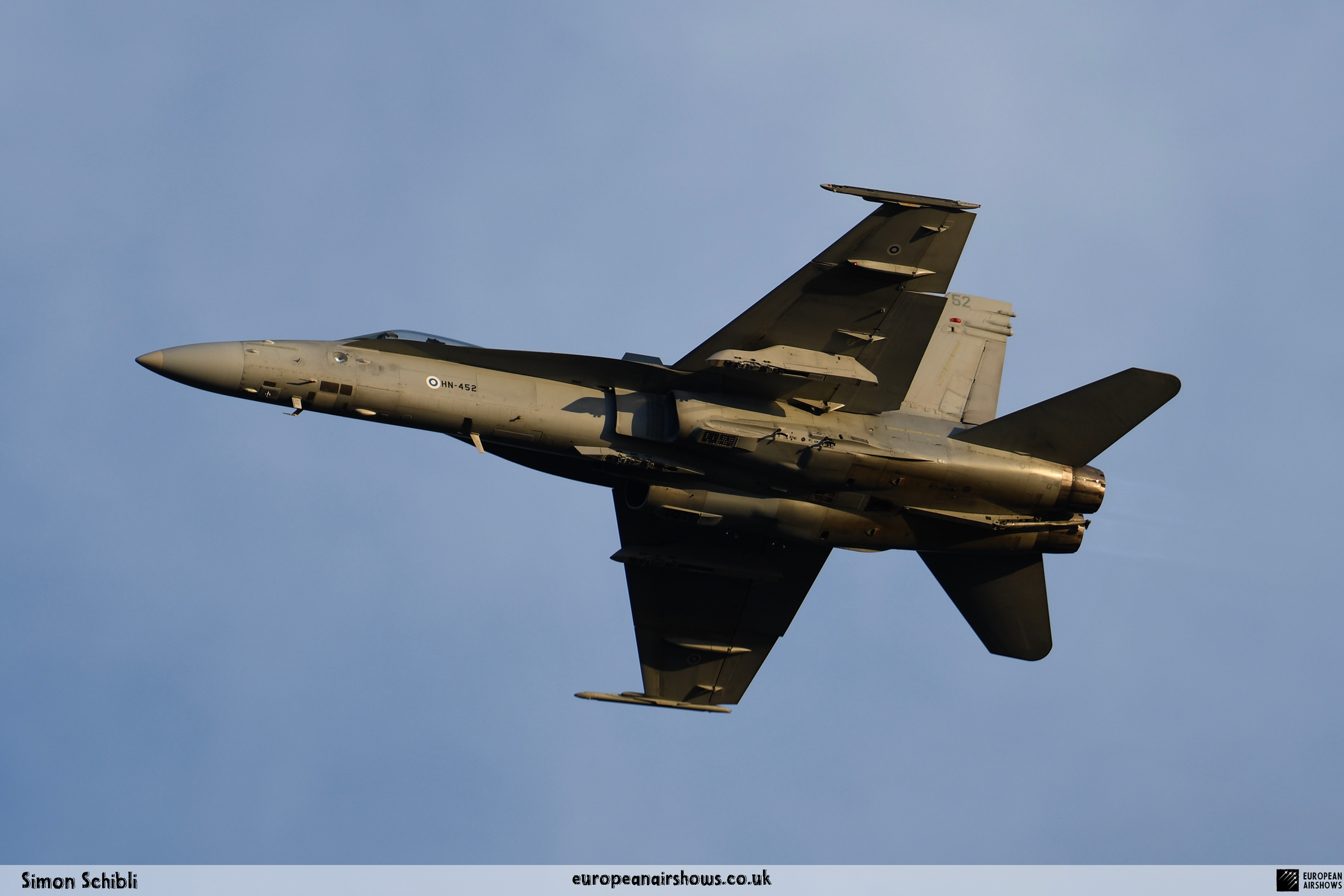
Finnish Air Force Hornet Solo Display
Hornet Solo Display
The Finnish Air Force Hornet Solo Display is a highly skilled demonstration team that showcases the exceptional capabilities of the F/A-18 Hornet, a multirole fighter aircraft that has been a cornerstone of Finland’s air defense since its introduction in the 1990s. Known for its agility, speed, and versatility, the Hornet is put through its paces during the team’s performances at various airshows across the region. The display features a series of breathtaking aerial maneuvers, including high alpha maneuvers—where the aircraft operates at steep angles of attack—demonstrating remarkable control and stability. These maneuvers allow the pilot to execute tight turns and rapid changes in direction, captivating audiences with the sheer power and precision of the aircraft. Adding to the visual spectacle, the team incorporates flares, which trail behind the Hornet, creating a dramatic and striking effect that enhances the overall excitement of the show.
These performances serve a dual purpose: they entertain spectators while also engaging the public and promoting the significance of military aviation within Finland. The Hornet Solo Display team highlights the advanced technological capabilities of the F/A-18 Hornet and the expertise of the Finnish Air Force pilots who operate it. By showcasing the precision and professionalism required to handle such a sophisticated aircraft, the team fosters a deeper appreciation for military aviation and inspires future generations of pilots and aviation enthusiasts. The combination of skillful piloting, high alpha maneuvers, and the stunning use of flares ensures that each performance leaves a lasting impression, reinforcing the Finnish Air Force’s commitment to excellence in the skies.
About the McDonnell Douglas F/A-18 Hornet
The McDonnell Douglas F/A-18 Hornet is a twin-engine, supersonic, all-weather, carrier-capable, multirole combat aircraft developed for the United States Navy and Marine Corps. Designed in the 1970s by McDonnell Douglas (now part of Boeing) and Northrop, it evolved from the YF-17 as a replacement for the aging F-4 Phantom II and A-7 Corsair II. The Hornet took its maiden flight on November 18, 1978, and officially entered service in 1983, quickly establishing itself as a versatile platform capable of both air-to-air and air-to-ground missions, including fighter escort, fleet air defense, suppression of enemy air defenses, and close air support
The F/A-18’s adaptability and reliability led to its widespread adoption beyond the U.S., with countries such as Australia, Canada, Finland, Kuwait, Malaysia, Spain, and Switzerland integrating it into their air forces. The aircraft saw extensive combat during the Gulf War (1991), the Iraq War (2003–2011), and the War in Afghanistan, earning praise for its performance and ease of maintenance. Over 1,480 Hornets have been produced, with variants like the F/A-18E/F Super Hornet extending its legacy into the 21st century.
Developmentally, the Hornet benefited from a collaborative design process, though Northrop later parted ways to focus on other projects, leaving McDonnell Douglas to refine and produce the aircraft. Its combat-proven record and continuous upgrades—such as advanced avionics and weaponry—have kept it relevant in modern warfare, solidifying its status as a cornerstone of naval and international air power.
Specifications
Crew
1 (C) / 2 (D)
Length
56 ft 1 in (17.1 m)
Wingspan
40 ft 4 in (12.3 m)
Height
15 ft 5 in (4.7 m)
Max Speed
1,034 kn (1,190 mph, 1,915 km/h)
Combat Range
400 nmi (460 mi, 740 km)
Service Ceiling
50,000 ft (15,000 m)
Fuel Capacity
10,860 lb (4,930 kg)
F/A-18 Hornet in the Finnish Air Force
The Finnish Air Force adopted the F/A-18 Hornet as its primary combat aircraft in the 1990s, seeking to replace its outdated MiG-21 and Saab 35 Draken fighters. After a competitive evaluation, Finland ordered 64 Hornets—comprising 57 single-seat F/A-18C models and seven twin-seat F/A-18D models—with deliveries occurring between 1995 and 2000. These aircraft were assembled locally by Valmet (now Patria), marking a significant modernization of Finland’s air defense capabilities.
Since their introduction, the Finnish Hornets have been upgraded with advanced systems, including the AIM-120 AMRAAM missile and the Joint Helmet Mounted Cueing System (JHMCS), enhancing their effectiveness in both air-to-air and air-to-ground roles. They have played a key role in national defense and international cooperation, participating in exercises like Baltic Air Policing and supporting NATO-led operations, reflecting Finland’s strategic alignment with Western defense frameworks.
In 2021, Finland announced plans to phase out its Hornet fleet, selecting the Lockheed Martin F-35A Lightning II as its successor, with deliveries slated to begin in 2026. Until then, the F/A-18 remains the backbone of Finnish air power, a testament to its durability and adaptability in the challenging Nordic environment.
Did You Know?
- The F/A-18 Hornet features leading edge extensions (LEX) that enhance its high angle of attack performance, allowing for impressive maneuvers like the "high alpha pass."
- It has been the aircraft of choice for the U.S. Navy's Blue Angels since 1986, demonstrating its agility and reliability in precision aerobatics.
- The F/A-18 was involved in the first combat use of the AIM-120 AMRAAM missile during the Gulf War, marking a significant advancement in air-to-air warfare.
- Its design includes a digital fly-by-wire flight control system that provides "carefree handling," preventing the aircraft from entering uncontrollable flight regimes.
- The F/A-18's cockpit incorporates a "glass cockpit" with multi-function displays, reducing pilot workload and improving situational awareness.
Test Your Knowledge
1. What is the maximum speed of the F/A-18 Hornet?






















